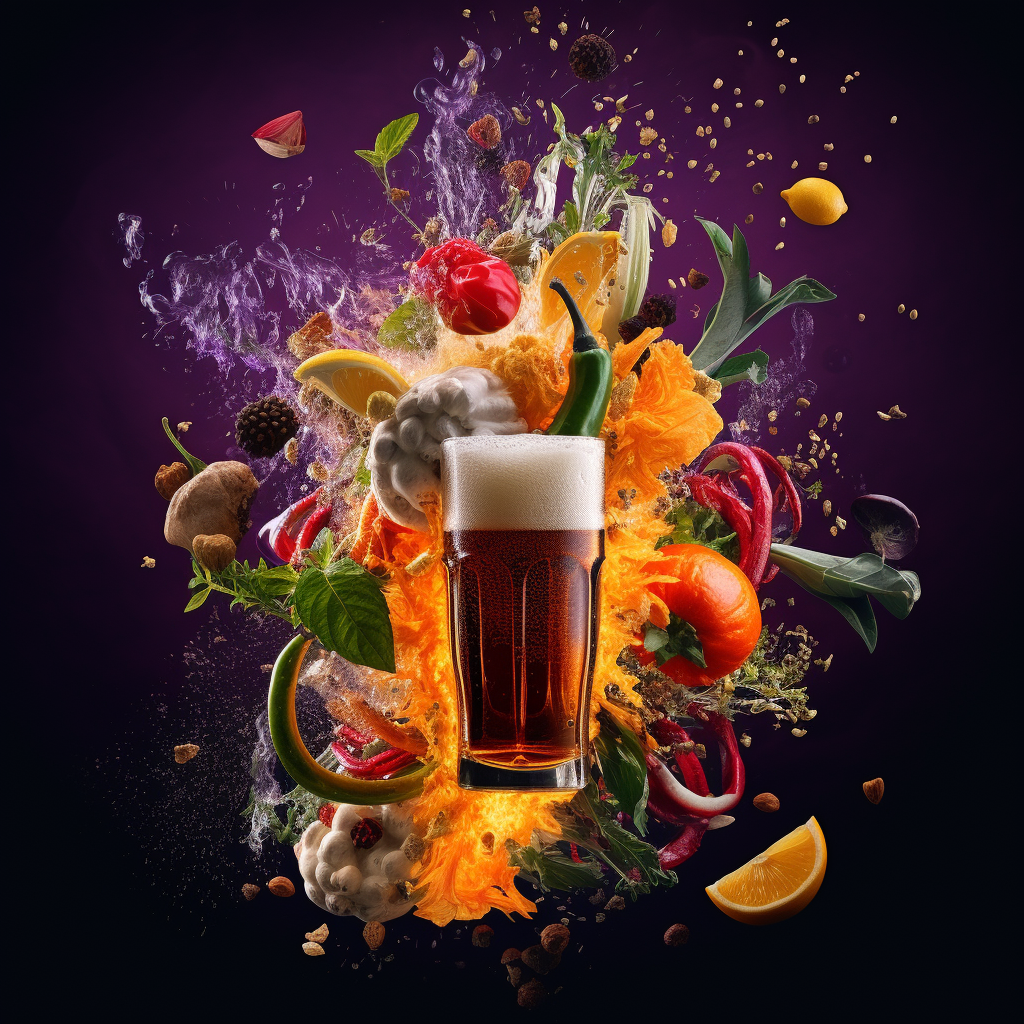Tapping into Global Flavors - Part 1
Introduction- IFT Flavors to Watch
The food industry releases an annual report on the "flavors to watch", usually presented by flavor houses like ADM, Kerry or Bell. However, the beer industry doesn't pay as much attention to this report as most of the flavoring comes from hops, malt, and yeast. Nevertheless, I wanted to share some insights from the food and beverage world on the trends that large companies such as Diageo and Kellogg's will be exploring. These trends include not only tangible flavors but also concepts that any consumer product maker can explore. I will try to draw a connection to the beer industry in each category.
Writer’s note: There is a lot to go over, so I will be making this into a two-part article.
Floral Flavors
The flavor industry is witnessing a surge in floral flavors like jasmine, rose, lavender, hibiscus, and eucalyptus, which are gaining popularity due to their association with wellness and holistic health. Consumers are increasingly seeking flavors that align with their goals for physical and emotional well-being, and botanical options with functional properties that promote gut health and mental acuity are in high demand.
Examples
Jasmine, Rose, Lavender, Hibiscus, Eucalyptus
Beer Connection
Floral notes like lavender, rose, and hibiscus can add a fragrant, calming dimension to beers. Craft brewers may introduce these botanical flavors into IPAs or wheat beers to attract health-conscious consumers who appreciate wellness-oriented beverages. The addition of floral-forward hops can provide flavor without chemicals.
Bitter Flavors
In a shift away from overly sweet tastes, consumers are embracing bolder and more bitter flavors. This trend is driven by a desire for healthier choices and is also influenced by government-led initiatives to reduce sugar consumption. Bitter flavors are perceived as sophisticated and worldly, appealing to a more educated and health-conscious consumer base. As an aging population becomes more tolerant of complex and bitter flavors, products featuring ingredients like arugula and high-cocoa content dark chocolate are gaining traction.
Examples
Arugula, High-cocoa content dark chocolate, espresso/dark roast coffee, dandelion root, teas, star anise
Beer Connection
Incorporating inherently bitter elements like arugula or high-cocoa dark chocolate can lend complexity to craft stouts or porters. Swapping out milk chocolate for a more bitter chocolate, or using chocolate bitters could be an excellent way to incorporate this trend into beer.
Savory Flavors
Expect to see savory flavors appearing in unique and unexpected ways, with chefs pushing the envelope by incorporating tastes typically associated with savory dishes into desserts and cocktails. Vegetable-forward cocktails and desserts featuring herbs, spices, and even mild cheeses are becoming more prevalent, offering consumers a delightful balance of sweet and savory in every bite.
Examples
Vegetable-forward cocktails (think Michelada, Bloody Mary), Desserts incorporating herbs, spices, (think rosemary, chipotle) and mild cheeses
Beer Connection
Savory components like herbs, and spices (maybe not the cheese, but let me know if you attempt this), offer an intriguing profile when introduced to beers that can offer a simple backdrop. These unconventional elements can make for a unique beer-tasting experience.
International Flavors
Consumers are increasingly exploring international flavors, seeking out culinary experiences that infuse products with the essence of various cultures and regions. From tikka sauce wings to Korean potato salad, a wide range of global flavors is becoming more accessible, exposing consumers to new cuisines and flavors in familiar dishes. Regional cuisines from Mexico, Southeast Asia, and the Caribbean are expected to inspire flavor innovation and development in 2024.
Examples
Tikka sauce wings, Za'atar wings, Birria ramen, Sashimi tostadas, Tandoori masala pasta, Wasabi/kimchi mashed potatoes, Cheeseburger ravioli, Vietnamese po'boys, Green curry risotto, Tandoori chicken burger, Korean potato salad, Japanese guacamole
Beer Connection
Much like that of the spice and herb category, utilizing global influences like tikka or Korean spices can result in exotic beer varieties that resonate with the North American consumer's desire for international culinary experiences but also keeping safe in their comfort food. With this category, discussing options for making more traditional beer styles from around the world should be done with the input of those who have experience in creating those beers and in a culturally sensitive way.
Wrapping Up Part 1
The ongoing influence of global culinary experiences, wellness trends, and shifting palates is evident in the dynamic world of flavors. The beer industry has an exceptional opportunity to tap into these trends, incorporating them into their brews and attracting a broader range of consumers. As we delve further into the nuances of flavor profiles and their connection to the beer industry, stay tuned for the second installment of this series, where we will explore even more flavor trends and their potential implications for brewers.
References:
Cvetan, D. (2023, October 5). Outlook 2024: Flavor Trends. FOOD TECHNOLOGY MAGAZINE. Retrieved from https://www.ift.org/news-and-publications/food-technology-magazine/issues/2023/october/features/outlook-2024-flavor-trends


